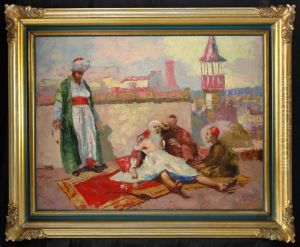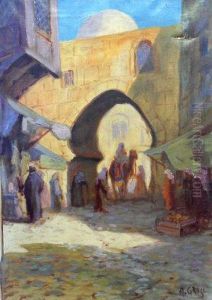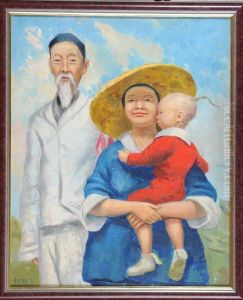Antal Grosz Paintings
Antal Grosz was a Hungarian artist, born in 1890 in Hungary, whose work is less commonly known in the mainstream art world but nonetheless offers significant insight into the European art scene of the early 20th century. His life and career were deeply influenced by the historical and political upheavals of his time, including the two World Wars and the interwar period in Hungary. Despite these challenges, Grosz managed to develop a unique artistic voice that reflected his personal experiences and the broader societal changes of his era.
Grosz's early work was marked by experimentation with various styles and mediums, reflecting the diverse influences of European modernism. He engaged with Impressionism, Expressionism, and elements of the emerging Avant-garde, blending these influences into a distinctive style that was both deeply personal and reflective of the broader artistic trends of his time. His work often explored themes of human emotion, social critique, and the beauty of the natural world, showcasing a deep sensitivity to both the inner world of individuals and the external realities of society.
Throughout his career, Grosz faced significant challenges, including the economic and political instability of Hungary in the interwar period, which affected the artistic community deeply. Despite these difficulties, he remained committed to his artistic practice, contributing to the cultural life of Hungary and participating in several exhibitions. His work was appreciated by a circle of connoisseurs and fellow artists, though he never achieved the level of fame or recognition of some of his contemporaries.
The outbreak of World War II and the subsequent occupation of Hungary had a profound impact on Grosz, both personally and professionally. The war years were marked by hardship and isolation, which inevitably influenced his artistic output. His later works are characterized by a darker tone and a focus on themes of loss, resilience, and the human capacity for endurance in the face of adversity.
Antal Grosz's life came to a tragic end in 1945, just as the war was concluding. Despite his premature death, his body of work remains a testament to his talent and his unique perspective on the world. Grosz's art offers a window into the complexities of 20th-century European history, seen through the eyes of an individual who lived and created amidst some of the most turbulent times of the modern era. His legacy, though perhaps not as widely recognized as that of some of his peers, is cherished by those who appreciate the depth and sincerity of his artistic vision.


